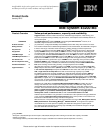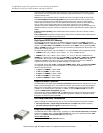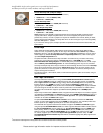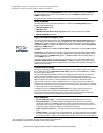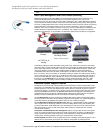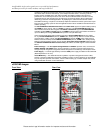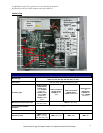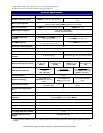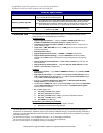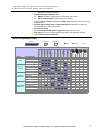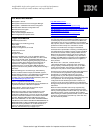
An affordable single-socket, quad-core server with high performance
and data protection for small, medium, and large businesses
Please see the Legal Information section for important notices and information.
2
Selling Features
Price/Performance
The x3200 M3 offers numerous features to boost performance and reduce product and operating costs:
• Models with a quad-core Xeon processor, high-end 1333MHz memory access, and 8MB of L3
cache, offer peak performance, capable of tackling the toughest jobs.
• Models containing a high-performance dual-core Core i3 processor, with high-end 1333MHz
memory access and 4MB of L3 cache, offer superior performance at an aggressive price.
• Models containing a dual-core Celeron or Pentium processor with speedy 1066MHz memory
access, for those on a budget.
• Ultra-fast 1333MHz or 1066MHz DDR3 ECC memory offers high speed and high availability.
• High-speed PCIe adapter slots offers investment protection by supporting high-performance
adapters, such as Ethernet, Fibre Channel and InfiniBand cards, none of which will run in older
legacy PCI slots.
• Integrated hardware RAID-0/1 support (standard in hot-swap models; optional in simple-swap
models) doesn’t consume a valuable adapter slot. RAID-0 offers improved disk performance via data
striping and RAID-1 offers disk mirroring for high availability.
• Gen 2 HDD cage support for up to four hot-swap 3.5-inch SAS or SATA hard disk drives or up to
eight hot-swap 2.5-inch SAS HDDs (CTO/special bid), offers high-performance and large capacity
with high availability. The SAS/SATA controller provides full-duplex (2 x 300MBps) data transfers for
SAS drives. For lower cost with high capacity, other models support up to four simple-swap SATA
drives.
• The integrated dual-port Gigabit Ethernet controller provides high-speed network communications.
• A high degree of device integration, including SAS/SATA, RAID-0/1/1E, Gigabit Ethernet, IMM
systems management, and video controllers, lowers costs and frees up valuable adapter slots.
Flexibility
The x3200 M3 has the ability to grow with your application requirements, thanks to:
• A choice of one quad-core Xeon processor with 2.4 to 2.93GHz clock rate, 8MB of L3 cache, and up
to 1333MHz memory access, or a dual-core Celeron, Pentium or Core i3 processor with a 2.26 to
3.06GHz clock rate, 2MB to 4MB of L3 cache, and 1066MHz or 1333MHz memory access.
• A choice of 73W dual-core or 95W quad-core processors.
• Up to 32GB of high-speed DDR3 system memory.
• Five available adapter slots: two PCIe x8, two PCIe x4 (one PCIe slot is reserved for a ServeRAID
controller) and two legacy PCI (32-bit, 33MHz) slots in all models.
• The seven USB 2.0 ports (two front, four rear, one internal) are up to 40X faster
4
than older USB 1.1
ports. This provides speedy access to external HDDs (non-arrayed), optical drives, tape drives, and
other USB devices. The internal port can be used for an optional tape drive, disk cartridge backup
device or USB key with embedded hypervisor.
• Up to four internal 3.5-inch simple-swap SATA or hot-swap SAS or SATA HDDs or eight 2.5-
inch hot-swap SAS HDDs (by special bid only), can be installed. This provides tremendous internal
storage capability, along with full data backup.
• Alternatively, iSCSI or Fibre Channel-attached storage can be attached using IBM System Storage
™
servers.
Manageability
Powerful systems management features simplify local and remote management of the x3200 M3:
• The x3200 M3 includes an Integrated Management Module (IMM) to monitor server availability,
perform Predictive Failure Analysis, etc., and trigger IBM Systems Director alerts. The IMM
performs the functions of both the mini Baseboard Management Controller (mBMC) of earlier
systems and the Remote Supervisor Adapter II and is upgradeable to remote presence/cKVM.
• An optional Virtual Media Key provides additional systems management capabilities, including Web-
based out-of-band control; virtual floppy and optical drive support; Windows “blue screen” error
capture; LDAP and SSL support; and remote redirection of PCI video, text, keyboard and mouse
(cKVM). And it does all this without consuming a valuable adapter slot.
• Integrated industry-standard Unified Extensible Firmware Interface (UEFI) next-generation BIOS.
New capabilities include:
– Human readable event logs – no more beep codes
– Complete setup solution by allowing adapter configuration function to be moved into UEFI
– Complete out-of-band coverage by Advance Settings Utility to simplify remote setup
4
Data transfer rates may be less than the maximum possible.



